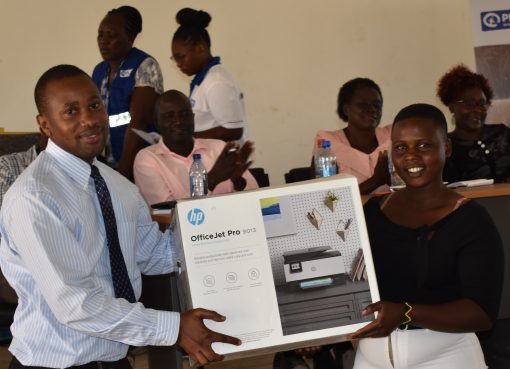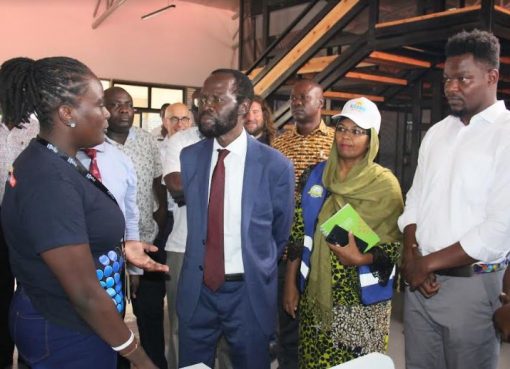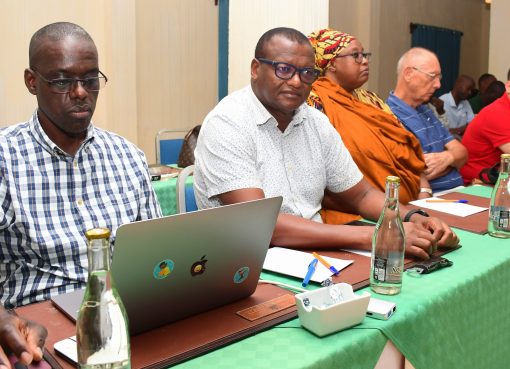Horticultural crops in the world incur high postharvest losses as high as 50 percent due to their inherent perishable nature.
The losses are high especially in the developing world where conventional methods of production and postharvest handling are not fully developed.
Tomato is an important vegetable crop in Kenya and widely grown for home consumption and for sale. Its demand is high both for domestic use and markets; however, tomato post-harvest losses are a threat to farmers but also to the country’s economy
Kirinyaga County produces an estimated 25 percent of all tomatoes produced in Kenya, the highest by a single County, according to data from the Ministry of Agriculture.
Farmers however in the area have been experiencing post-harvest losses as high as 50 percent.
A survey study carried by the Kenya Agricultural Livestock Research (KALRO) in Kirinyaga County under the Korea Africa food and Agricultural corporation initiative (KAFACI) project, found that tomato incurs a postharvest loss of 55.3 percent.
According to Dr. Margaret Muchui , a post-harvest physiologist, from KALRO , the study informed the basis and need to train small scale farmers and other stakeholders along the tomato value chain on proper post-harvest handling methods and also value addition of the produce.
“Tomato post-harvest losses is a result of poor handling rather than lack of storage equipment thus it is imperative for farmers to know more on how to handle their crop as this would not only reduce the losses but also increase food availability and hence enhance income from the crop”, she said.
Dr. Muchui urged farmers to also harvest their crops early in the morning rather than during the day to reduce sunlight exposure that tears off tomatoes skin, use certified seeds that produce tomatoes with hard skin and also form cooperatives and sell their products in bulk at better and higher prices.
She further advised farmers to sell their tomatoes under a shade to protect them from direct sunlight to further reduce tomato breakage and rotting due to heat.
“ We taught them on the right varieties needed to plant such as ones that are hard skinned so that it can withstand anything and transported far without getting injured and also on how to harvest and pack”, she said.
Dr. Muchui noted that they also held several workshops that involved value chain players from farmers, transporters, traders and extension officers who in turn would get the knowledge and do backstopping.
The training of trainers (ToTs), she added were trained from all the sub-counties of Kirinyaga County so that they also go and train the small scale farmers and other stakeholders in their regions to have a multiplier effect of the training where a wider audience would be reached
Dr. Muchui noted that since the training, most farmers have attested that they have been able to reduce their losses by as little as 20 percent and also seen their levels of income going up.
“ Loss is not when you throw a tomato, when you leave it in the sun in loses moisture, when you overfill when packing it means abrasion, leaving it open in the market without shade also causes abrasion and this shows some losses that farmers experience are internal in terms of quality” , she explained
Nicholas Munene Kathumbi, a farmer in Kariti area, Gacharu sub location, Kirinyaga County said since he started practicing what he had learnt from the training he has considerably lowered his post-harvest losses in his half an acre area and makes between Ksh 70,000 to Ksh 100,000 per harvest unlike before when he used to make Ksh20, 000.
“I have been taught about tomato production harvest and value addition. We used to harvest the tomatoes by putting in sacks only for them to break, but after the education on how to package them using plastic crates and buckets they do not break anymore.
We also used to put them under the sun and they spoil quickly but now we have been taught how to put them under the shades, under trees so that they are fresh, Munene said.
Munene further said the training on when to harvest, how to harvest, where to place tomatoes, the variety to plant, what time to transport the tomatoes and how to pack and where to store had also seen the farmers in the area reduce their post-harvest losses from as high as 40 percent to 10 percent .
“We have also accessed better markets after preparing the tomatoes for market as trained and forming groups so that we can negotiate as a group and speak in one voice”, he said.
Apart from the training Munene said most farmers were requesting to be trained on value addition of the tomato crop in order to reduce further the postharvest losses and this he noted would also ensure they produce more stable products that have longer shelf life.
Dr. Ji Gang Kim, Director of post-harvest technology, Division rural development Administration from Korea, said the KAFACI Initiative Horticulture Project initiated in 2014 for 14 African Countries is geared towards ensuring that post-harvest losses on horticultural produce is reduced from 50 percent to as low as 20 percent.
“Since 1994 post-harvest losses of horticultural crops is very high in Africa countries and until now the losses are still the same at 50 percent”, Dr. Kim said
The 6 year project worth Ksh9 million shillings post-harvest training programme through KALRO, he explained will be able to train farmers on post-harvest losses and also come up with a manual to guide industry in addressing the challenges.
He explained that the first phase in the project was learning about the post-harvest through training and coming up with a manual, but now the second phase currently underway is practicing and applying what is in the manual.
“At farm level we have now seen that farmers are using stick to avoid contamination of growing tomatoes. When harvesting, they also consider maturity and pick sound tomatoes considering the temperature. They are also practicing harvesting in the morning including using plastics to avoid injury of tomatoes due to over packing which they have all learnt”, Dr. Kim said
Korea Africa Food and Agriculture Cooperation Initiative (KAFACI) Horticulture Project focused on three horticultural crops in Kenya namely tomato, banana and potato with the tomato project being a study for all the African countries.
The Criteria for the choice of the County during the study was informed by the importance of the crop in the County and since Kirinyaga County Government produces 25 percent of tomatoes in the country, It has been working towards processing of tomatoes in a factory at Sagana/ Industrial park.
The processing is expected to offer farmers a lifeline and a chance to avoid exploitation by the tomato trade brokers and will be managed by Kirinyaga Horticultural Cooperative Society which currently has 300 members.
By Wangari Ndirangu




